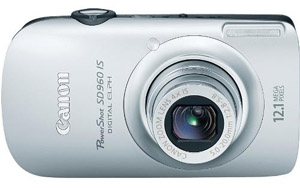We’re nearing the holiday shopping season once again, so as an exercise to familiarize myself with all the product lines out there (a lot has changed in the 17 months since I did the last one) and to provide a one-stop quick read for digital camera recommendations, here are recommendations for cameras that run the gamut of common use-cases and prices.
All prices are based on the lowest of amazon.com or bhphotovideo.com
Have you got a use case/need that isn’t covered here? Feel free to post it in the comments, and I’ll keep it in mind for future guides (or maybe update this guide, if there’s a glaring omission in a category). And if you think differently about any of the cameras, feel free to share that too!
General advice:
To give you all an idea of the perspective these recommendations are written from, here are a few guidelines I mostly go by:
Features trump image quality: With modern cameras, many image quality differences are mostly a consideration of the past. Almost every camera released today has megapixel resolution far in excess of what’s needed (or even usable) for the majority of applications (like making a 4×6″ print, uploading to Facebook, or even displaying full-size on the biggest computer monitor or LCD screen you can buy), and in most daylight scenarios there is practically zero difference between cameras, especially among the top tier of manufacturers. The main differentiator in your photographic experience and capability is what features you’ll have to work with – being able to take a wide shot with a 28mm wide-angle lens, or having a fast 5fps continuous shooting mode for action shots, for instance, is going to go a long way towards getting you the photographs you want, compared to minute differences in image quality or resolution.
Price/performance: The recommendations for different categories will mostly recommend the camera with the best value proposition – a lot of these are often written in the format of: Best budget camera under $200, best midrange camera under $300, best premium camera under $500, etc. While oftentimes, yes it’s true that Camera Xa has a slightly bigger LCD screen than Camera Xb and is therefore better, and the $50 premium still puts it under the $300 budget, as a knowledgeable consumer you wouldn’t want to spend that much more on a mostly cosmetic difference, and as an informed friend you would do best by recommending Camera Xb to your friend.
Simple Ultracompact
For many people, cameras are just cameras, and all they need is something that, for lack of a less-hackneyed phrase, they can “point and shoot”. They’re not interested in photography and don’t need nor want full manual controls, and can make do without a huge zoom range. They’ll take snaps while they’re out at social events or just randomly at home or in their room, but that’s about it. For this group there’s thesimple ultracompact – a basic camera that has a few useful features (wide-angle lenses for photos in restricted interior space – group photos at a restaurant, for example – and image stabilization for low-light situations) but otherwise just provides good overall quality and a small formfactor that can be taken just about anywhere.
Simple Ultracompact, midrange: Canon SD3500 IS
 For years, Canon’s iconic SD line has been the quintessential ultracompact point and shoot, and their popularity has good reason: they deliver solid image quality, decent featureset, no-frills point-and-shoot control, and aren’t overly expensive. The SD3500 is one of the better featured packages available, providing a 5x lens with extremely versatile 24mm wide-angle (perfect for taking photos indoors and getting everything in the frame), 720p HD video resolution, and the increasingly common image stabilized lens.
For years, Canon’s iconic SD line has been the quintessential ultracompact point and shoot, and their popularity has good reason: they deliver solid image quality, decent featureset, no-frills point-and-shoot control, and aren’t overly expensive. The SD3500 is one of the better featured packages available, providing a 5x lens with extremely versatile 24mm wide-angle (perfect for taking photos indoors and getting everything in the frame), 720p HD video resolution, and the increasingly common image stabilized lens.
- 14MP resolution
- 24-120mm (5x) zoom range
- f/2.8-5.9 aperture
- 1280×720, 30fps video (720p)
- Lens-based Image stabilization
- 160g (5.6oz)
- 99 x 56 x 22 mm (3.9 x 2.2 x 0.9 in)
- 220 shots battery life (CIPA)
- $249 on Amazon
 A plethora of Canon, Panasonic, and Fujifilm cameras rule the roost in the ultracompact category, all roaming around the $300 range. For a little less than $300, Canon’s SD960 puts together the best combination of image quality and features, with a 28mm wide-angle, image stabilization, and even 1280×720 (720p) video capability.
A plethora of Canon, Panasonic, and Fujifilm cameras rule the roost in the ultracompact category, all roaming around the $300 range. For a little less than $300, Canon’s SD960 puts together the best combination of image quality and features, with a 28mm wide-angle, image stabilization, and even 1280×720 (720p) video capability.
